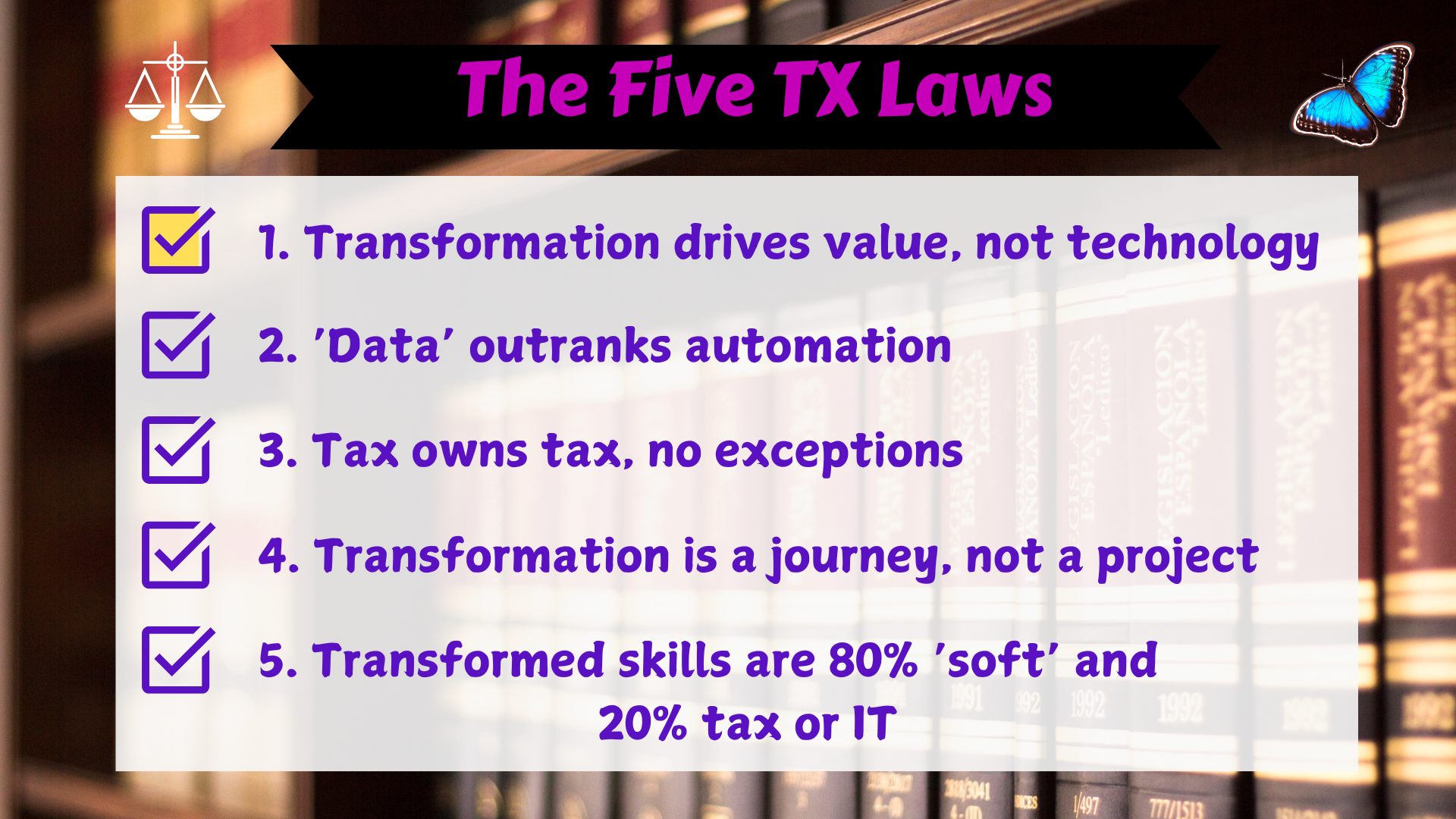The Five TX Laws are a form of universal truth. We know this because, after taking the tech-centric route for some time, astute individuals always tend to arrive at the same or similar set of conclusions. This is why our recent Five TX Strategies article resonated with so many of you.
However, making those laws a reality at your company is another matter. As we work towards that, in this series, we will review each law in turn; first with an (updated) principle, and secondly with a conversational narrative that provides real-world context in everyday language. For this, we imagined chatting with an intelligent friend, sipping brandy in comfortable armchairs by a fire (mental imagery inspired by The Economist Style Guide).
***
TX Law #1: Transformation drives value, not technology
Principle: The conditions needed to benefit fully from technology are predominantly human-centric.
Fireside chat:
Taxologist: “OK, let’s face it. There’s no digital value proposition without technology―that’s why we’re all here in the first place―but the lion’s share of that value is left on the table unless we rethink the conceptual framework around how it’s realized. The big problem is mindset. People want digital, but they don’t yet think digital. Culturally, their collective compass is set according to the business principle of successful arbitration of goods, labor, transport, and capital. If that’s their hammer, then every problem looks like a nail. Lindsay Herbert calls it ‘an industrial response to digital problems’ in her book on digital transformation.”
Listener: “Come on! People know better than that. They understand that technology isn’t the same as factories, workers, or delivery vans.”
Taxologist: “Intellectually, yes―I’m generalizing, of course, but in practice, they have yet to recalibrate their daily thought patterns and ways of working for the digital aspects of business. When the rubber hits the road, deeply ingrained habits die hard. A troubled project history doesn’t help either. If they’ve struggled in the past, they get tunnel vision about how, this time, they will move to the latest tech without mishap, and can easily lose sight of what it really means.”
Listener: “So, what does it really mean?”
Taxologist: “In simple terms, it means that technology alone isn’t enough. And I’m talking about major enterprise solutions with vast data models and business databases here, not just workflows or personal productivity tools. The real value here comes from digital capability enhancing transparency, control, and insight on a scale beyond most people’s usual field of reference. The tax authorities are starting to see that now. Take Italy―they cut their VAT gap in half within a year of introducing e-invoicing. Now that’s value!”
Listener: “So, what’s the problem?”
Taxologist: “The problem lies in how that actually works, the exact mechanisms, the vision needed to set it in motion, and the skills needed to keep it going in a constantly changing world. For instance, the Italians aren’t sure how to halve that gap again or whether a different strategy would be better or worse―and they’ve barely scratched the surface in terms of finding answers in the data they’ve collected. You have to remember that these systems are just representations of things that exist or events that happen in the real world, and they’re far from perfect. They need a lot of help―but more from functional people, not IT. The people who know and work every day in that world must learn how their digital representations operate and the new ways they create value―and that’s quite different from the resource arbitration I just mentioned. As it turns out, most of that new value is only realizable from a transformed state. Without transformation, the technology costs too much and never works as well as it should anyway.”
***
Remember to join us at the WU Tax Law Technology Center course in Vienna in November 2024, where we will explore business use cases, discuss specific strategies, and workshop practical aspects of tax transformation.


No comment yet, add your voice below!